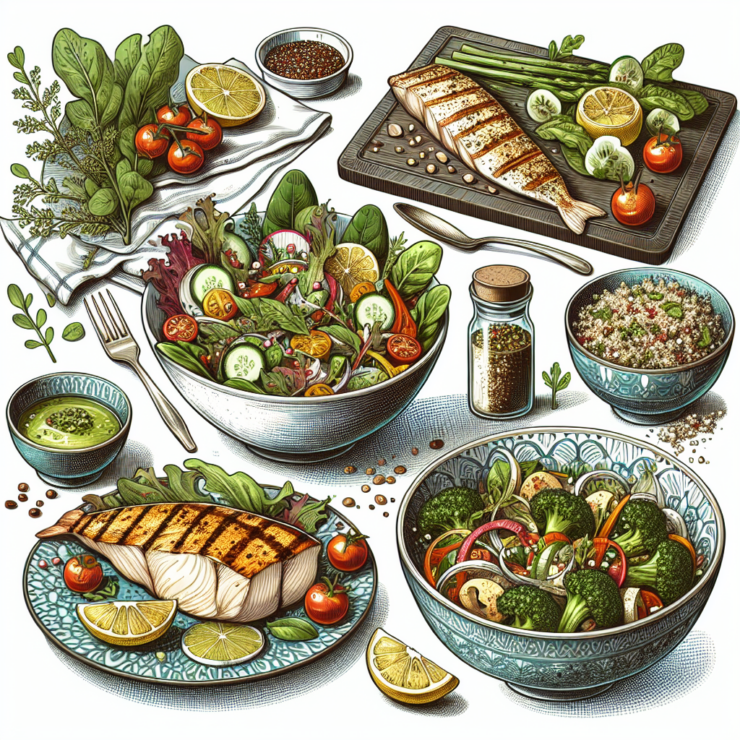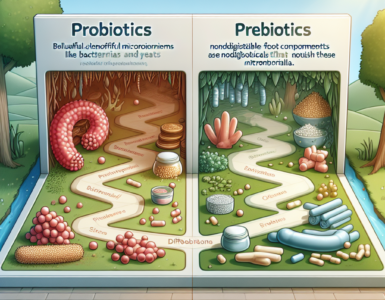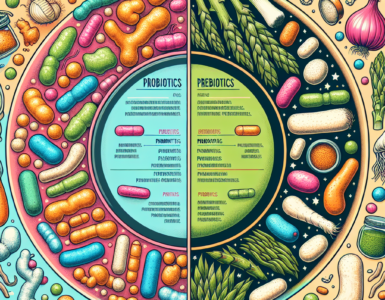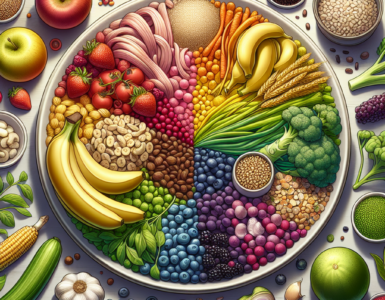Understanding Caloric Deficit
The Basics of Caloric Deficit for Weight Management
A caloric deficit occurs when an individual consumes fewer calories than their body expends for energy. This deficit is the cornerstone of weight loss, as it forces the body to utilize stored fats for energy, leading to fat loss over time. The principle behind caloric deficit is simple: to lose weight, one must consume less energy than they burn.
For effective weight management, understanding the daily caloric needs based on factors such as age, sex, weight, height, and physical activity level is essential. These factors determine an individual’s Basal Metabolic Rate (BMR), which is the number of calories needed to maintain body weight without additional activity. Creating a caloric deficit involves reducing calorie intake below the BMR plus calories expended through physical activities.
| Factor | Daily Caloric Need |
|---|---|
| Basal Metabolic Rate | 1200 – 1800 calories |
| Light Physical Activity | Additional 200 – 400 calories |
| Moderate Physical Activity | Additional 400 – 600 calories |
| Vigorous Physical Activity | Additional 600 – 800 calories |
The Importance of Satisfying Meals in a Caloric Deficit Diet
Maintaining a caloric deficit does not mean that meals have to be unsatisfying or monotonous. It is crucial for individuals to consume meals that are fulfilling to prevent feelings of deprivation, which can lead to overeating or abandonment of the dietary plan. Satisfying meals have a balance of macronutrients—proteins, fats, and carbohydrates—that provide satiety, as well as a variety of flavors and textures to keep the dining experience enjoyable.
Incorporating high-volume, low-calorie foods such as vegetables and fruits can increase the size of meals without significantly increasing the caloric content, thereby creating meals that are both nutritious and filling. Additionally, the inclusion of adequate dietary fiber and protein contributes to feelings of fullness, which can help control hunger and support adherence to a low-calorie diet.
By crafting meals that are both low in calories and high in satisfaction, individuals can achieve weight management goals while still enjoying their food. This approach encourages a sustainable and healthy relationship with food, which is beneficial for long-term success in weight management.
Crafting Low-Calorie Dinners
Creating dinners that are low in calories yet fulfilling can be a cornerstone for successful weight management. Understanding the interplay between macronutrients and flavor can guide individuals in making meal choices that support their goals.
The Role of Macronutrients in Low-Calorie Meals
Macronutrients – carbohydrates, proteins, and fats – play distinct roles in the body. For low-calorie meals, the focus is often on selecting quality sources that provide satiety and support metabolic health.
| Macronutrient | Function | Suggested Low-Calorie Sources |
|---|---|---|
| Carbohydrates | Provide energy | Vegetables, fruits, whole grains |
| Protein | Builds and repairs tissues | Lean meats, legumes, tofu |
| Fats | Supports cell growth, absorbs nutrients | Avocado, nuts, seeds, olive oil |
When crafting a low-calorie dinner, balancing these macronutrients is vital. A meal too heavy in low-quality carbohydrates may lead to quick hunger pangs, while inadequate protein can result in muscle loss. Healthy fats are calorie-dense but crucial for nutrient absorption and should be included in moderation.
Balancing Flavor and Nutrition
The notion that low-calorie meals must be bland is a myth. Flavor and nutrition can coexist without compromising the caloric goals of a meal. Incorporating a variety of herbs, spices, and low-calorie cooking methods can enhance taste without adding significant calories.
Here are some strategies for balancing flavor and nutrition:
- Use herbs such as basil, cilantro, or parsley to add a fresh, aromatic touch to dishes.
- Spices like cumin, paprika, and turmeric can introduce deep, complex flavors.
- Citrus juices and vinegars provide a tangy kick without heavy sauces or dressings.
By combining macronutrient-rich foods with flavorful, low-calorie ingredients, dinners can be both satisfying and conducive to weight management. The key is to be mindful of portions and to embrace the natural tastes of high-quality, nutrient-dense foods.
Low-Calorie Dinner Options
Creating dinner options that are low in calories yet filling and flavorful is an essential aspect of a successful weight management plan. By focusing on nutrient-dense ingredients that offer satisfaction without excess calories, individuals can enjoy a variety of dishes that support their health goals.
Vegetable-Centric Dishes
Vegetable-centric dishes are a cornerstone of low-calorie dinner options. Vegetables are naturally low in calories and high in fiber, which can help individuals feel full and satisfied after their meal. Incorporating a range of colorful vegetables not only adds visual appeal but also ensures a variety of nutrients are consumed.
| Vegetable | Calories per cup (cooked) |
|---|---|
| Broccoli | 55 |
| Spinach | 41 |
| Asparagus | 40 |
| Cauliflower | 29 |
| Zucchini | 20 |
A stir-fry with a mix of these vegetables, seasoned with garlic, ginger, and a splash of low-sodium soy sauce, makes for a delicious and nutritious meal.
Lean Proteins and Whole Grains
Including lean proteins and whole grains in dinner meals ensures sustained energy and satiety. Lean proteins such as chicken breast, turkey, fish, and tofu are excellent sources of protein without a high calorie count. Pairing these with whole grains like quinoa, brown rice, or barley adds fiber and essential nutrients to the meal.
| Protein Source | Calories per 3 oz (cooked) |
|---|---|
| Chicken Breast | 128 |
| Turkey Breast | 117 |
| Tuna (light, canned in water) | 99 |
| Tofu (firm) | 70 |
| Whole Grain | Calories per cup (cooked) |
|---|---|
| Quinoa | 222 |
| Brown Rice | 218 |
| Barley | 193 |
A balanced plate might feature grilled chicken breast with a side of quinoa and steamed green beans.
Soups and Stews
Soups and stews are excellent low-calorie dinner options that can be both comforting and filling. By starting with a base of broth or tomato sauce, one can add a variety of vegetables, lean meats, and beans to create a hearty dish. Soups and stews can also be prepared in large batches and stored for convenience.
| Soup Ingredient | Calories per cup |
|---|---|
| Chicken Broth | 10 – 20 |
| Diced Tomatoes | 32 |
| Mixed Vegetables | 59 – 80 |
| Lentils | 230 |
| White Chicken Meat | 120 |
A classic chicken vegetable soup with a tomato base, carrots, celery, onions, and shredded chicken can provide a warm and satisfying low-calorie meal.
By exploring these low-calorie dinner options, individuals can find a variety of meals that cater to their taste preferences and dietary goals. Whether one prefers the freshness of vegetable-centric dishes, the balance of lean proteins with whole grains, or the comfort of soups and stews, there are ample choices to create enjoyable and health-conscious dinners.
Cooking Techniques for Low-Calorie Meals
Adopting the right cooking techniques can greatly influence the caloric content of meals. Those aiming for weight management through a caloric deficit often find that how they cook is just as important as what they cook. Below are some cooking methods that help in preparing low-calorie dinner options that are both nutritious and flavorful.
Steaming and Poaching
Steaming is a cooking method that preserves the integrity of ingredients without the need for added fats. This technique is particularly beneficial for vegetables and fish, retaining their nutrients and moisture. The process involves cooking food with the steam produced by boiling water, making it one of the healthiest ways to prepare meals.
Poaching, similar to steaming, is a gentle way of cooking by submerging food in a liquid at a low temperature. This method is ideal for delicate foods like eggs or poultry, ensuring they are cooked through without unnecessary calories from oils or butter.
Both steaming and poaching allow the natural flavors of foods to shine through, often eliminating the need for calorie-laden dressings or sauces.
| Cooking Method | Average Calories Saved per Serving |
|---|---|
| Steaming (compared to frying) | 100 – 200 |
| Poaching (compared to frying) | 100 – 200 |
Grilling and Roasting
Grilling imparts a distinct charred flavor to foods while also allowing excess fat to drip away from the food, reducing overall calorie content. Vegetables, lean meats, and fish are excellent for grilling.
Roasting is another technique that enhances the natural sweetness and flavors of foods, especially when it comes to vegetables. Using a light spray of oil or a well-seasoned cast iron pan can minimize added fats while achieving a satisfying caramelization.
Both grilling and roasting are methods that can transform simple ingredients into savory and enjoyable meals fitting for a low-calorie diet.
| Cooking Method | Calories Saved by Choosing Lean Meats (e.g., chicken breast over ribs) |
|---|---|
| Grilling | 150 – 300 |
| Roasting | 150 – 300 |
Sautéing with Minimal Fat
Sautéing is a quick cooking method using a small amount of oil or fat in a hot pan to cook food rapidly. To create low-calorie dinner options, one can sauté with minimal fat by using healthy oils like olive or avocado oil and non-stick pans. Additionally, using broth or water as a substitute for oil can further reduce calorie intake while still allowing for the flavors of the food to develop.
Sautéing vegetables, lean cuts of meat, or tofu can create a flavorful base for a variety of low-calorie meals without compromising taste.
| Ingredient | Amount | Calories Saved by Substituting Oil with Broth or Water |
|---|---|---|
| Olive Oil | 1 tablespoon | 119 |
| Butter | 1 tablespoon | 102 |
| Chicken Broth | 1 tablespoon | 1 |
By employing these cooking techniques, individuals can enjoy a range of low-calorie dinner options that support their weight management goals while still providing satisfying and delicious meals.
Ingredient Swaps for Lower Calorie Counts
Creating satisfying low-calorie dinner options often involves making smart ingredient substitutions. By replacing high-calorie ingredients with lower-calorie alternatives, one can reduce overall caloric intake while still enjoying a full-flavored meal.
Replacing High-Calorie Ingredients
To keep meals within a low-calorie range, consider the following ingredient swaps:
| High-Calorie Ingredient | Low-Calorie Substitute |
|---|---|
| Full-fat dairy (cheese, cream) | Low-fat or non-fat dairy options |
| Ground beef | Ground turkey or chicken |
| White rice | Cauliflower rice or brown rice |
| Pasta | Zucchini noodles or spaghetti squash |
| Bread crumbs | Rolled oats or crushed nuts |
| Sugar | Stevia or monk fruit sweetener |
| Mayonnaise or creamy dressings | Greek yogurt or mashed avocado |
| Butter | Applesauce or mashed banana (for baking) |
| Oil (for frying) | Vegetable broth or water (for sautéing) |
| Nuts (in salads or toppings) | Seeds (pumpkin, sunflower, chia) |
These swaps not only reduce calories but also enhance the nutritional profile of the meals by incorporating more vitamins, minerals, and fiber.
Using Herbs and Spices for Flavor
One of the key challenges in preparing low-calorie meals is ensuring that they are still rich in flavor. Herbs and spices offer a calorie-free way to enhance taste without adding extra fats or sugars.
| Herbs and Spices | Flavor Profile | Suggested Use |
|---|---|---|
| Basil | Sweet, peppery | Tomato-based dishes, salads, chicken |
| Cilantro | Citrus-like | Salsas, Asian or Mexican dishes |
| Rosemary | Pine-like, savory | Roasted meats, potatoes, bread |
| Cumin | Warm, earthy | Curries, stews, soups |
| Paprika | Sweet, smoky | Rubs, marinades, vegetables |
| Turmeric | Bitter, pungent | Rice dishes, curries, soups |
| Cinnamon | Sweet, woody | Fruit dishes, stews, oatmeal |
| Ginger | Spicy, sharp | Stir-fries, marinades, tea |
| Garlic | Pungent, spicy | Almost any savory dish |
| Oregano | Bold, slightly bitter | Italian and Mediterranean cuisine |
By leveraging the robust flavors of these herbs and spices, meals become more satisfying without relying on high-calorie ingredients for taste. This approach supports weight management goals while still allowing for a delicious and diverse dinner menu.
Planning Your Low-Calorie Dinner Menu
Creating a low-calorie dinner menu requires consideration of portion sizes, meal balance, and the inclusion of various food groups. These strategies are essential for those aiming to manage their weight while ensuring their meals remain satisfying and flavorful.
Portion Control Tips
Portion control is vital in maintaining a calorie deficit without sacrificing satiety. Here are several tips to help manage portion sizes:
- Use smaller plates to naturally limit the amount of food consumed.
- Measure servings using standard kitchen tools to prevent overeating.
- Be mindful of serving sizes listed on nutrition labels and adjust accordingly.
- Listen to hunger cues and avoid eating out of habit or boredom.
- Save leftovers to prevent the temptation of finishing large portions.
| Food Group | Suggested Serving Size |
|---|---|
| Vegetables | 1 cup (raw), 1/2 cup (cooked) |
| Fruits | 1 medium piece, 1/2 cup (chopped) |
| Proteins | 3-4 oz or the size of a deck of cards |
| Whole Grains | 1/2 cup (cooked) |
| Dairy | 1 cup (milk or yogurt), 1 oz (cheese) |
Preparing Balanced Meals
A balanced meal contains a combination of macronutrients – proteins, carbohydrates, and fats – while remaining low in calories. Here’s how to assemble a balanced plate:
- Fill half the plate with non-starchy vegetables to provide volume and fiber.
- Allocate one quarter of the plate to lean proteins to support muscle maintenance.
- Reserve the remaining quarter for whole grains or starchy vegetables to supply energy.
- Add a small portion of healthy fats for flavor and nutrient absorption.
Incorporating a Variety of Food Groups
Variety isn’t just the spice of life; it’s also key to nutritional adequacy. Including a range of food groups ensures an array of essential nutrients:
- Vegetables: Aim for a mix of colors to benefit from different vitamins and minerals.
- Fruits: Opt for whole fruits over juices for added fiber and fewer calories.
- Proteins: Choose lean options like poultry, fish, tofu, and legumes.
- Whole Grains: Select grains like brown rice, quinoa, and whole wheat pasta.
- Dairy or Alternatives: Go for low-fat or fat-free options to reduce calorie intake.
- Fats: Use sources like avocados, nuts, seeds, and olive oil in moderation.
By focusing on these strategies, individuals can design a low-calorie dinner menu that supports their weight management goals while offering a satisfying and nutritious end to the day.
Health and Nutrition Disclaimer: Please note that the recipes and advice provided are for general information purposes only and should not be considered as medical or professional health advice. Always consult with a healthcare professional or a dietitian before starting any new diet or making significant changes to your eating habits, especially if you have health concerns or conditions.











